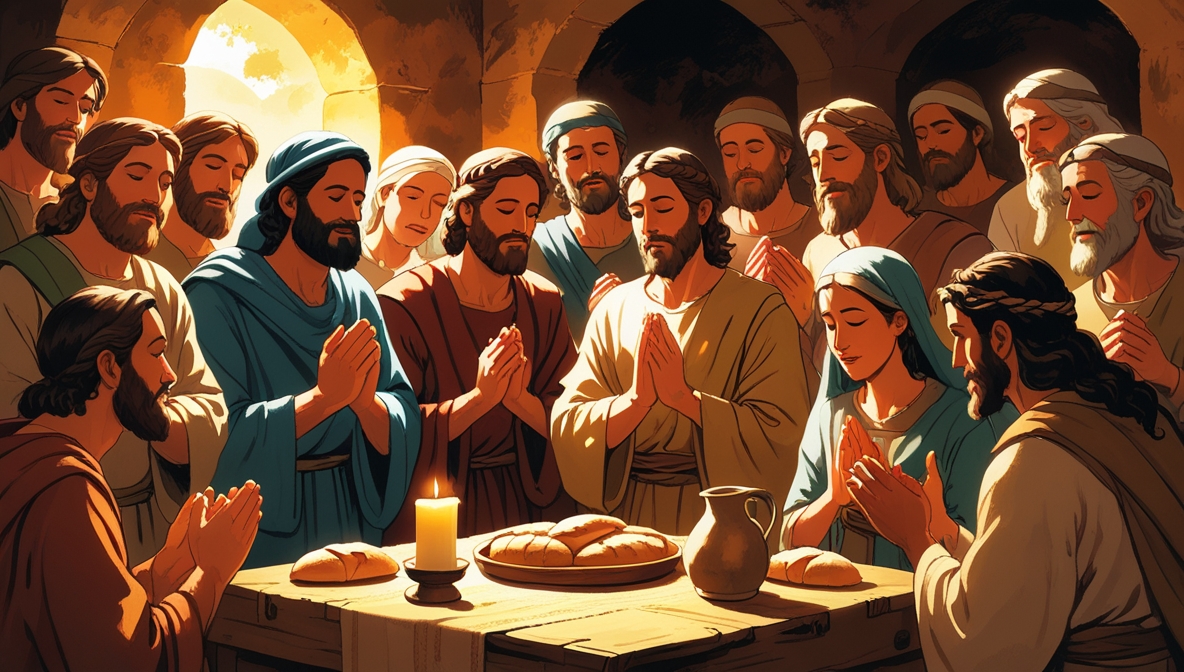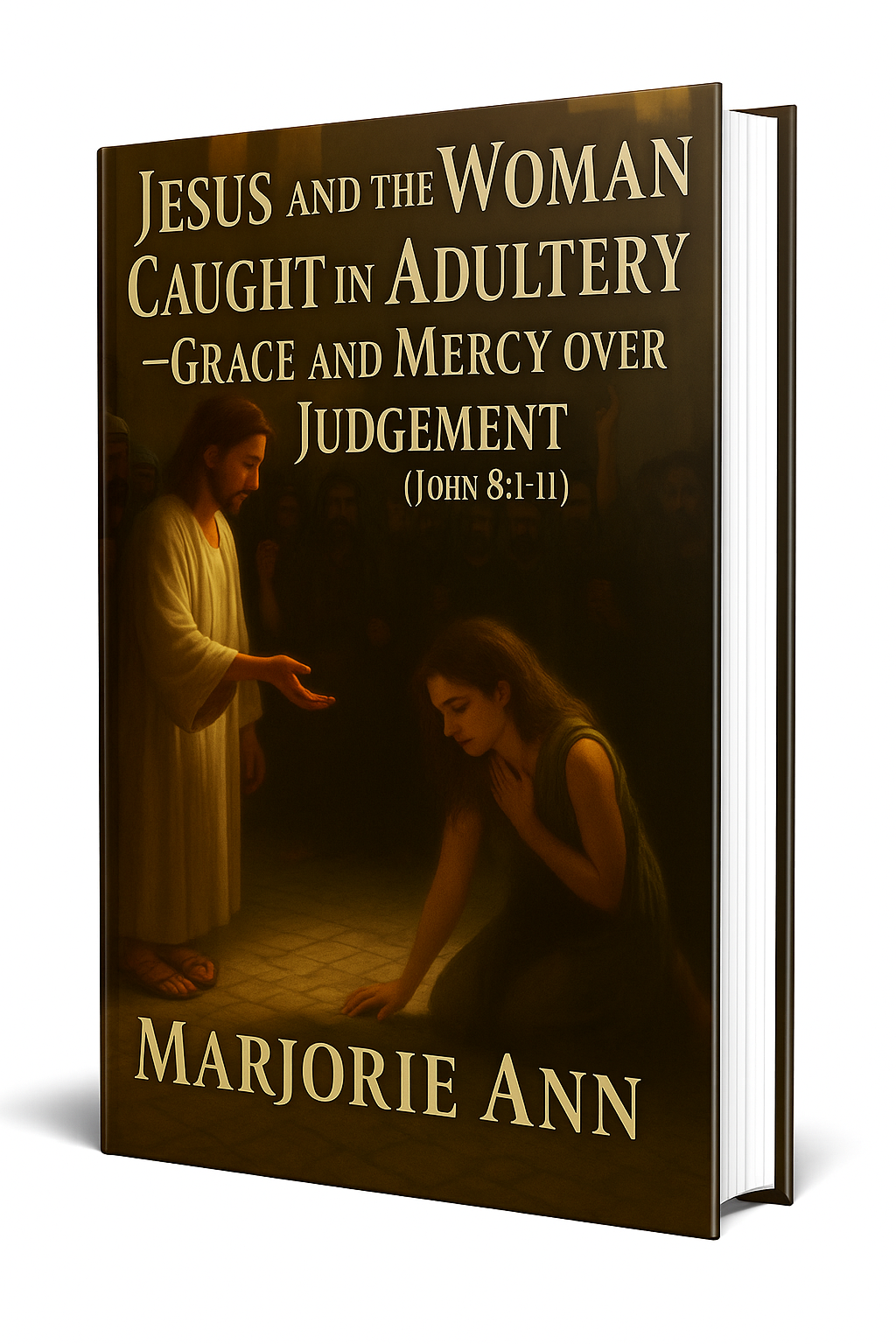Community As God’s Design For His People
You were not created to live in isolation. From the first pages of Scripture to the final chapters, God reveals community as a central part of His plan for humanity. When you read the Bible, you see people connected—families, tribes, congregations, and the global body of Christ. The phrase God’s design for community captures this broad biblical vision: God intended that His people live, worship, serve, bear burdens, and grow together. As you explore this article, you’ll notice how the Scriptures describe community both as an ethical calling and a theological reality that shapes how you live out your faith.
The Garden: Community in the Beginning
Right from creation, God’s design for community is evident. When God declares that it is not good for man to be alone, He forms a companion, indicating that relationship is woven into your very nature. This early act shows that God’s purposes include mutual support, companionship, and a generative relationship. You see the first model of human community in marriage, which becomes a foundational image for understanding broader spiritual fellowship and partnership.
Genesis 2:18 shows God’s care for your social nature and sets a tone that community is not a later ethical add-on but part of God’s original design. When you consider creation, recognize that community was instituted before sin—community is intrinsic to goodness, not merely a remedy for human brokenness.
Community After the Fall: A Broken But Persistent Design
Even after sin fractures relationships, God continues to work through and toward community. You see familial lines, covenants, and chosen people in the Old Testament—indications that God still calls people into corporate life despite human failure. The promises made to Abraham and Israel involve a people, a land, and a purpose that depend on collective identity and covenantal relationships.
The ongoing presence of festivals, worship, and communal laws demonstrates that God’s design for community persists as a framework for holiness and mutual responsibility. Scriptures like Psalm 133:1 affirm the goodness of living together in unity, even as narratives show the cost and struggle of achieving it.
Jesus and the New Community
Jesus inaugurates a renewed vision of community that expands the covenantal boundaries. His ministry gathered disciples around him, taught them to love one another, and prayed for their unity. The community Jesus forms is not based on ethnicity or purity codes but on faith and love, a foretaste of the kingdom.
In His high priestly prayer, you can read about His desire that all believers be one. This prayer gives you a theological reason to pursue unity and fellowship: the world will see God’s love through the unity of His people. Refer to John 17:20-23 to see how the community Jesus envisions reflects the eternal relationship between the Father and Son, and how your unity is meant to witness to the world about God’s nature.
The Early Church: Practical Expressions of Community
When you examine the early church, you find practical, radical expressions of community. The first Christians devoted themselves to the apostles’ teaching, to fellowship, to breaking of bread, and to prayer. They shared possessions, cared for the needy, and met regularly—an embodied example of mutual dependence.
The narrative in Acts shows that community involved worship, teaching, and sacrificial generosity. Acts 2:42-47 and Acts 4:32-35 describe how their unity and shared life were both spiritual and practical. If you’re wondering how to live as part of God’s design for community, the early church offers a model of spiritual rhythm and concrete care for one another.
Theological Basis: The Body and the Family
The New Testament gives you two principal metaphors for community: the body and the family. In the body metaphor, Paul explains that believers are different members with complementary roles, each needed for the health of the whole. This imagery underscores interdependence and diversity within unity.
Read 1 Corinthians 12:12-27 and Romans 12:4-5 to see how your gifts and roles matter. In the family metaphor, you are children of God and siblings to one another. This relational language encourages affection, mutual discipline, and care, reflecting God’s paternal and redemptive heart toward His people.
Unity and Diversity: Holding Tension Well
God’s design for community includes both unity and diversity. You’re called to hold convictions while welcoming differences in background, temperament, gifts, and function. The biblical community celebrates diversity as part of God’s creative wisdom, seeking unity in essentials and charity in non-essentials.
The letters of Paul repeatedly instruct you to maintain the unity of the Spirit and seek peace among yourselves. Ephesians lays this out in terms of one body and one Spirit; diversity isn’t a problem to erase but a resource to steward. Look at Ephesians 4:1-6, 11-16 for an extended treatment of how unity and diversity function in the church.

Worship and Sacraments: Community in Practice
Corporate worship and sacraments are vital expressions of God’s design for community. When you gather for worship, you participate in a shared story, confess together, pray together, and celebrate the sacraments that bind you to Christ and to one another. Baptism and the Lord’s Supper are communal acts that signify initiation into a people and ongoing nourishment for communal life.
Jesus’ command to “do this in remembrance of me” connects individual faith to collective remembrance. Participating in sacraments reminds you that faith is not private: it is enacted in shared rituals that embody the gospel and strengthen communal identity.
Spiritual Formation Through Community
Your spiritual growth happens most naturally in relation to others. Discipleship in community gives you mentors, peers, and accountability that sharpen and sustain your faith. Community provides a context in which spiritual disciplines like prayer, Scripture reading, service, and confession can be practiced regularly and deeply.
Hebrews encourages you to spur one another on toward love and good deeds, warning against neglecting meeting together. Hebrews 10:24-25 emphasizes how community functions as the garden of spiritual growth—where encouragement, correction, and perseverance take root.
Mutual Care and Responsibility
Part of God’s design for community is mutual care. You are called to bear one another’s burdens, weep with those who weep, and rejoice with those who rejoice. Community is where spiritual gifts are exercised in service, where those who are strong come alongside the weak, and where no one is left to struggle alone.
Galatians makes this explicit: carry one another’s burdens and thereby fulfill the law of Christ. Galatians 6:2 invites you to a hands-on theology—practical, sacrificial love that evidences the gospel in everyday life.
Correction, Discipline, and Grace
Community is not just comfort; it’s a place for correction and accountability. Matthew 18 sketches a process for loving confrontation and restoration when believers sin against one another. This is part of God’s design for community—not punitive isolation but restorative discipline aimed at reconciliation and holiness.
Read Matthew 18:15-20 to see how Jesus frames confrontation within the community, culminating in the assurance of His presence when two or three are gathered in His name. Discipline, exercised rightly, protects the community and seeks the restoration of those who have strayed.
Hospitality: The Small Spiritual Discipline with Big Impact
Hospitality is a simple but powerful theme in Scripture that models God’s design for community. Opening your home and your life to others creates space for relationships that embody the gospel. In the early church, hospitality enabled missionaries and fostered deep fellowship.
You can see the ethic of hospitality in various passages urging believers to welcome strangers and to use their resources for others’ good. Paul’s instructions to the church and the practice of early Christians demonstrate hospitality as an essential part of communal life. Romans and Hebrews also include hospitality within their practical exhortations, making it clear that welcome is part of the gospel shape of the community.
Reconciliation and Forgiveness
If community is central to God’s plan, then so are reconciliation and forgiveness. You will be hurt by others, and you will hurt others; the gospel does not remove these realities but gives you a pattern for responding. Forgiveness is a communal practice that restores relationships and witnesses to the world about God’s reconciling work in Christ.
James tells you to confess your sins to one another so that you may be healed, and Paul repeatedly calls for forgiveness as a core Christian virtue. See James 5:16 and Colossians 3:13 for clear biblical teaching about confession, forgiveness, and their role in preserving community.
Service and Mission: Community on Mission
God’s design for community is missional. The church is not a self-contained social club; it’s a sent people. Community equips you for witness and service to the world—expressing compassion, justice, evangelism, and transformation. The Great Commission envisions a community that goes, makes disciples, baptizes, and teaches.
When your community spends itself for the sake of others, it reflects the heart of the Father who sends. Acts and the letters show that mission and community are intertwined; mutual support enables sustained mission, and mission forms community around a common vision. Matthew 28:18-20 captures the marching orders given to the community.
Practical Structures for Living Out God’s Design for Community
To live out God’s design for community, you need structures and rhythms: gathered worship, small groups, service teams, discipleship relationships, and missional engagement. Structures are not ends but means—tools to cultivate habits of love, accountability, and service.
You can implement these in your local context through intentional practices like weekly gathering, regular small-group meals, mentoring relationships, and planned outreach. These structures help you embody the theology of community by creating opportunities for spiritual formation, care, and mission.
The Role of Leadership in Shaping Community
Leaders play a key role in nurturing the community. Pastors, elders, and leaders are called to equip the saints for ministry, protect the flock, and model servanthood. Healthy leadership empowers others to use their gifts and cultivates an environment where everyone can participate.
Ephesians instructs leaders to prepare the people for works of service so that the body may be built up. Ephesians 4:11-12 provides an ideal: leaders are not meant to do all the ministry themselves but to equip the whole community to live out God’s design for community.
Obstacles to Community and How You Can Overcome Them
There are many barriers to living in an authentic community: busyness, distrust, selfishness, theological disagreements, and cultural individualism. Recognizing these obstacles is the first step; overcoming them requires humility, intentionality, and the practices the Scriptures recommend.
You can begin by prioritizing presence over productivity, practicing vulnerability and confession, investing in deep relationships, and cultivating hospitality and generosity. The biblical exhortations—like bearing one another’s burdens and encouraging one another—are practical instructions for dismantling barriers and nurturing lasting community.
Community in a Digital Age
You may wonder how technology fits into God’s design for community. Digital tools can connect you with distant brothers and sisters, facilitate small groups, and spread the gospel quickly. Yet they can also lead to shallow interactions and a false sense of intimacy.
Use digital spaces as supplements to embodied community, not substitutes. Aim for virtual interactions that lead to real-world engagement, accountability, and care. The goal remains the same: to embody gospel-centered relationships that reflect God’s design for community in both online and offline spheres.
Intergenerational Community: Wisdom Across Ages
God’s design for community includes intergenerational relationships. When you engage across age groups, you benefit from wisdom, institutional memory, and differing perspectives, while the young receive mentorship and the older find purpose and vitality.
Scripture models intergenerational teaching—older believers instructing younger ones, children learning to love God and neighbor. Encourage families, mentorship programs, and multi-generational gatherings to preserve the continuity and vitality of faith across generations.
Justice, Mercy, and Community
A community shaped by God’s design will pursue justice and mercy. The biblical prophets and Jesus himself condemn religious communities that ignore the oppressed. Your community must be attentive to the marginalized, advocating for fairness and demonstrating compassion.
Micah summarizes what God requires: to act justly, love mercy, and walk humbly. Practically, this means your communal worship and mission should include efforts to alleviate suffering, reform unjust systems, and bear witness to God’s concern for the poor and vulnerable.
Suffering Together: The Crucible of Community
Suffering tests and deepens the community. When tragedy strikes, your response—presence, lament, practical help—reveals the depth of your communal bonds. Scripture expects you to carry burdens and to grieve with those who grieve.
The church becomes the place where suffering is shared and redeemed. Passages that encourage prayer, mutual support, and visiting the sick, such as James 5:14-16 remind you that spiritual and physical care are both part of God’s design for community.
Unity as Witness: Why the World Needs Your Community
Your unity matters for the gospel’s credibility. Jesus prayed that your oneness would make the world believe. When people see a community that loves, forgives, serves, and sacrifices, they encounter a living demonstration of God’s reconciling power.
Strive for unity that is not uniformity. By living authentically together, you show that the gospel not only saves individuals but shapes relationships and societies. Your local congregation can be a signpost pointing others to the beauty of God’s kingdom.
Moving Forward: Practical Next Steps for You
If you want to embody God’s design for community, start with simple, concrete steps. Join or start a small group, practice hospitality at least once a month, find a mentoring relationship, serve on a team, and participate in regular corporate worship. Make time for confession and forgiveness, and commit to bearing one another’s burdens.
These practices will help in making the community a lived reality rather than an ideal. As you take these steps, you’ll notice spiritual growth and deeper relational roots—the kind that reflect God’s intended design for His people.
Conclusion: Your Part in God’s Ongoing Story
God’s design for community is not a relic of a past age; it’s the present and future reality He calls you to live into. The Scriptures give you examples, commands, and promises that call you into mutual dependence, sacrificial love, unity in diversity, and shared mission. You are invited to participate in people who reflect God’s own relational life and redemptive purposes.
Embrace community as both a gift and a responsibility. As you do, you’ll find that the Christian life, while personal in faith, is most fully realized in communal expression—together worshiping, serving, suffering, and rejoicing in the God who made you for fellowship.
Explore More
For further reading and encouragement, check out these posts:
👉 7 Bible Verses About Faith in Hard Times
👉 Job’s Faith: What We Can Learn From His Trials
👉 How To Trust God When Everything Falls Apart
👉 Why God Allows Suffering – A Biblical Perspective
👉 Faith Over Fear: How To Stand Strong In Uncertain Seasons
👉 How To Encourage Someone Struggling With Their Faith
👉 5 Prayers for Strength When You’re Feeling Weak

📘 Jesus and the Woman Caught in Adultery – Grace and Mercy Over Judgement
A powerful retelling of John 8:1-11. This book brings to life the depth of forgiveness, mercy, and God’s unwavering love.
👉 Check it now on Amazon 🛒💥
🔥 “Every great message deserves a home online.” 🌍💬🏡
Don’t let your calling stay hidden. Start a Christian blog or website using Hostinger — with 99.9% uptime, a free domain, and SSL, your voice can shine for God’s glory anytime, anywhere.
💥 Begin today. 🛒 Try it RISK-FREE! ✅
✝️ “Your body is God’s temple — care for it with purpose.” 💪💖🏛️
Renew your energy and restore balance naturally. Mitolyn helps support a healthy metabolism, giving you the vitality to live out God’s calling with strength and confidence.
🔥 Unlock Your Metabolic Power! ⚡Burn More Calories & Feel Great With Mitolyn. 💪
👉 Start Today. 🚀 Check Price Now. 🛒💰
💰 As a ClickBank & Amazon Affiliate, I earn from qualifying purchases.
📖 Acknowledgment: All Bible verses referenced in this article were accessed via Bible Gateway (or Bible Hub).
🚀 Want to explore more? 👉 Dive into our new post on Why Jesus? and experience the 🔥 life-changing truth of the Gospel!






